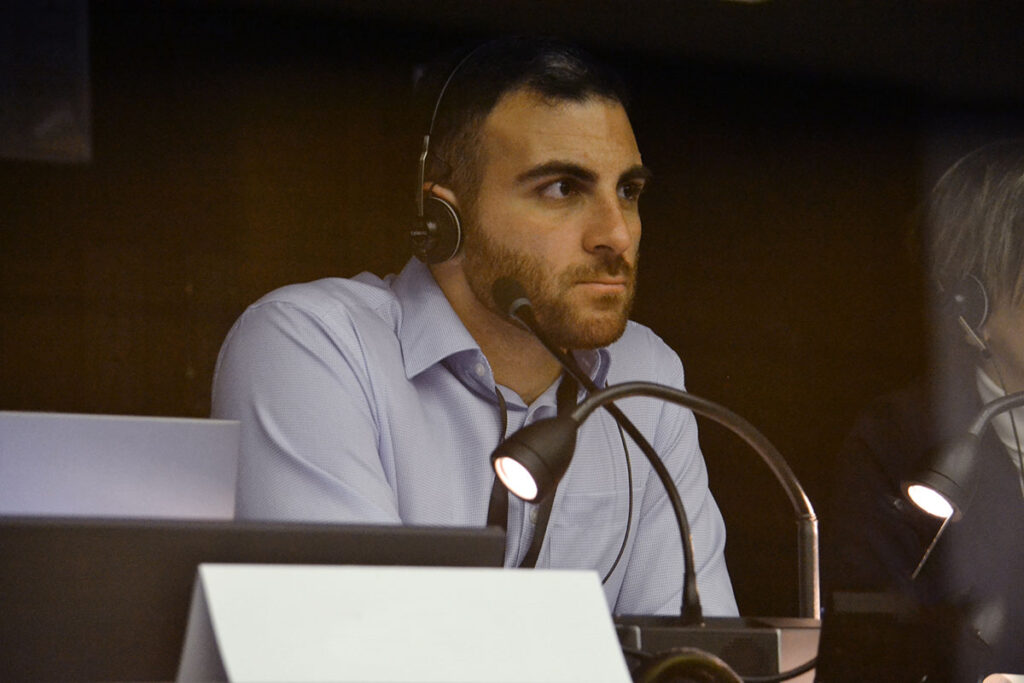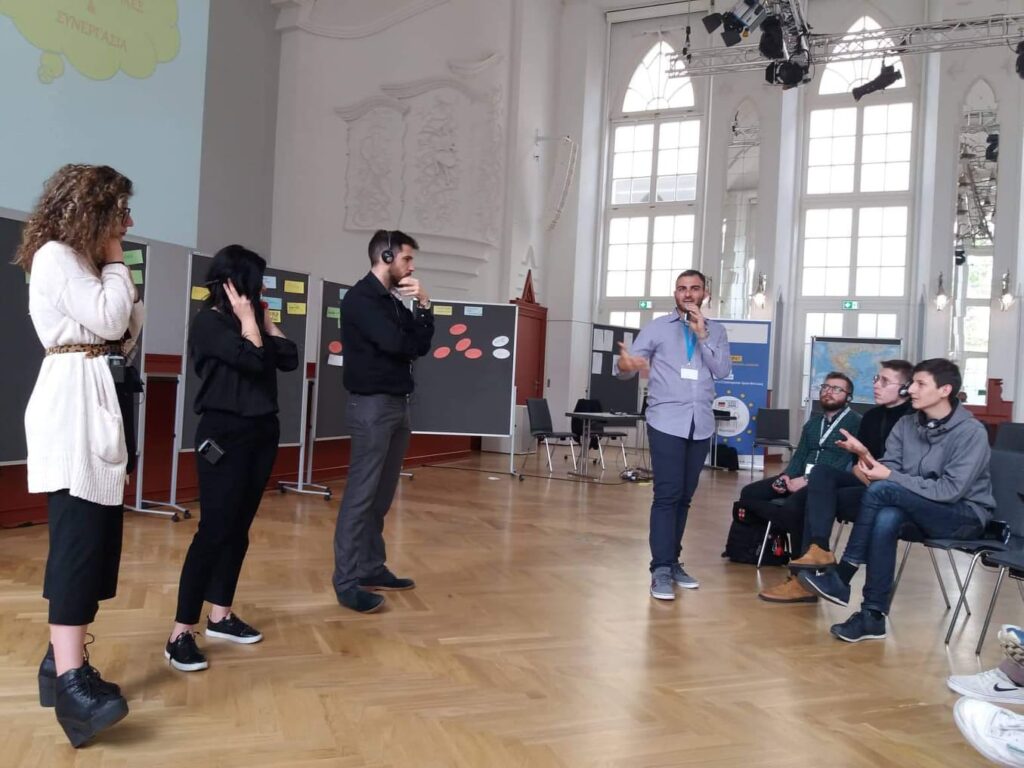- Home
- /
- Interpreting
Types of interpreting

Conference interpreting
This type of interpreting is used at international conferences where there is more than one working language. Conference interpreting is usually simultaneous interpreting and requires special equipment (booths, microphones, headphones). There is one booth in the room for each working language. Interpreters work in the booths and participants, using special headsets, choose the language they want to hear. Conference interpreting requires special training, development of techniques and knowledge of specialised topics. Moreover, since most conferences are usually long, interpreters work in groups of two and alternate between each other every half hour. This is because interpreting is a highly demanding mental task and regular rotation is necessary to maintain a high level of performance.
- has been specially trained and has developed a set of skills and techniques
- is well-informed about the specialised topics being presented at conferences
- is familiar with the terminology and technical jargon used in various fields
- maintains absolute confidentiality
Liaison interpreting
Liaison interpreting is primarily used at business meetings. Liaison interpreting may be offered in commercial negotiations, visits to fairs or other business units, interviews, product presentations, commercial events, meetings, etc.
- It protects you from ambiguities and any misunderstandings
- It adds credibility to your profile and fosters trust in you
- It ensures that language and cultural elements are fully understood
Escort interpreting
In escort interpreting, the interpreter assists clients in communicating effectively in a foreign language and culture. Escort interpreters are cultural liaisons or assistants who guide a client while traveling in a foreign country. These types of interpreters are typically selected for informal settings and can be responsible for everything from touring around town to helping close a critical business deal. It is often used in the following settings:
- Factory tours
- International conferences
- Meet-and-greets
- Medical visits / impatient admissions / appointments with doctor
- Government meetings

- have a deep knowledge of vocabulary and nuance in both the source and target languages. They are also able to speak the target language at the level of an educated native speaker and effectively interpret idioms, metaphors and meaning.
- have a strong grasp on cultural norms and customs. This will protect you from needless complications.
- have the know-how to help you with everything you need in a foreign country. The interpreter can get you from the airport to your hotel, but can also schedule any meetings, and recommend various places to eat and even suggest good spots to visit.


Modes of interpreting
During this mode of interpreting, the interpreter speaks at the same time as the speaker does. When interpreting simultaneously, interpreters listen, understand, translate, and speak all at the same time. Naturally, the concentration required for this highly demanding intellectual performance cannot be kept up endlessly even by vastly experienced interpreters. Therefore, you will always have at least two interpreters per foreign language sharing a booth and taking turns every 30 minutes.
This mode is also known by its French name chuchotage. The interpreter sits next to, between or behind the participants and literally whispers a summary of what is being said. This method is usually provided for no more than three participants. It is used whenever the number of people who do not understand the conference language is very small. The foreign participants and their interpreter must be located close to the speaker so that the interpreter can hear the original well enough to translate it. At the same time, it is also advisable to separate them a little from the rest of the audience to minimise any disturbance.
Remote simultaneous interpretation is when the interpreter works from a computer connecting to the meeting or event via the internet. It can be performed by using specially designed platforms that enable interpreters to work from anywhere in the world if they have a computer, headset, and internet connection. Depending on the meeting setup, attendees can then access the interpretation via a mobile phone, a laptop, or a computer.
With consecutive interpreting, the speaker and the interpreter take turns, speaking one after the other. The interpreter usually stands/sits next to the speaker and listens, sometimes taking short notes. After a few sentences the speaker pauses to let the interpreter translate his/her words into the other language. This mode is suitable for short events with two or a maximum of three different conference languages. It is the method of choice for press conferences, addresses at gala events, speeches at receptions, short presentations, etc.




